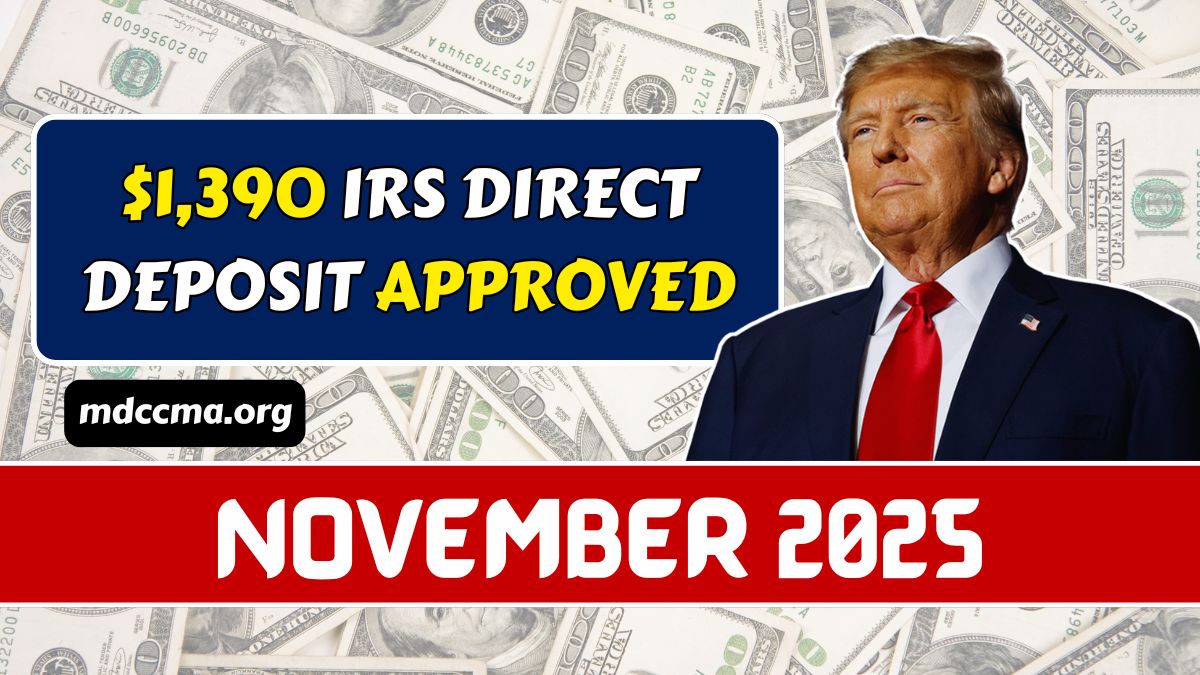As discussions around the $4,983 federal relief payment intensify, millions of Americans are closely watching for updates on what could become one of the most significant financial support measures of 2025.
With inflation still straining household budgets, the one-time payment aims to help low- and middle-income families manage essential expenses.
Although the proposal has not yet been finalized, early policy drafts already outline eligibility rules, payment methods, and how the IRS may handle the distribution process.
Rising living costs—still above pre-2020 levels—have pushed policymakers to consider stronger financial assistance. If approved, the $4,983 IRS payment would help families cover everyday needs such as rent, groceries, fuel, medical bills, and transportation.
As winter 2025 approaches, citizens are increasingly seeking clarity on income limits, timelines, and required documentation.
Eligibility Requirements for the Proposed $4,983 Federal Relief Payment
Eligibility for the proposed 2025 relief payment will be determined by multiple factors, including filing status, income, residency, and tax records.
Only U.S. citizens, permanent residents, and qualifying resident aliens with valid Social Security numbers are expected to qualify.
IRS drafts also indicate that certain mixed-status households may be included, depending on the final rules.
Taxpayers claimed as dependents on another person’s return will not be able to receive the payment directly. Since the IRS will rely on 2024 tax return data, filing accurate and complete information is essential.
Income Limits (Full Payment Eligibility)
- $75,000 for single filers
- $150,000 for married couples filing jointly
- $112,500 for head-of-household filers
Those with incomes slightly above these levels may still receive reduced payments, depending on how far their earnings exceed the thresholds.
Individuals with outdated banking details, changed addresses, or mismatched identity information may face verification delays or default to slower paper-check distribution.
Expected Distribution Timeline and IRS Payment Schedule
If the proposal receives full approval, the IRS will likely use a phased rollout system to distribute the $4,983 payment. Direct deposit is expected to be the primary method due to its speed and lower processing time.
Estimated Direct Deposit Window
November 12 – November 28, 2025
Recipients whose bank information is current and verified should receive their deposits in the earliest payment batches. Errors such as outdated account numbers, incorrect personal details, or tax return discrepancies can cause delays.
Paper Checks and Debit Cards
Paper checks and prepaid debit cards are expected to be issued from late November to mid-December, taking longer due to printing, mailing, and identity checks. Taxpayers who recently moved, switched banks, or provided incomplete details may fall into later payment waves.
In situations where payments bounce back or addresses cannot be validated, the IRS may require a manual review. If funds are still not received by mid-December, individuals may need to request a payment trace or claim the amount through the Recovery Rebate Credit during the upcoming tax season.
How Americans Can Prepare for Faster Payment Delivery
To ensure timely receipt of the proposed $4,983 2025 IRS payment, taxpayers can take several proactive steps:
1. File the 2024 Tax Return Early
This is the most critical requirement, as the IRS will use 2024 filings to confirm income levels and household information.
2. Update Banking and Address Information
Ensuring correct details on the IRS online portal helps avoid failed deposits and mailing delays.
3. Respond Quickly to IRS Identity Verification Requests
Identity checks are common, and quick responses can prevent processing holdups.
4. Organize Documents and Notices
Keeping tax papers, IRS letters, and proof of residency handy helps if a payment trace becomes necessary.
5. Plan Ahead for Responsible Use of Funds
Financial advisors suggest focusing on:
- rent & utilities
- medical needs
- loan repayments
- credit card debt reduction
- emergency savings
Since the payment may arrive close to the holiday season, experts recommend avoiding impulsive spending and emphasizing long-term financial resilience.
The proposed $4,983 IRS relief payment for 2025 could offer meaningful support to families facing high living costs. Although the program has not yet been officially approved, early drafts provide valuable insights into eligibility rules, income limits, expected scheduling, and preparation steps.
By filing taxes early, updating personal information, and preparing for possible verification checks, Americans can position themselves to receive the payment as quickly as possible once the IRS finalizes the rollout.
FAQs
No. The payment is still under review, but policymakers are actively discussing eligibility rules and distribution plans.
No. Full payments will go to taxpayers within specific income limits. Higher-income individuals may receive reduced amounts.
You may need to request a payment trace or claim it through the Recovery Rebate Credit during the next tax season.
